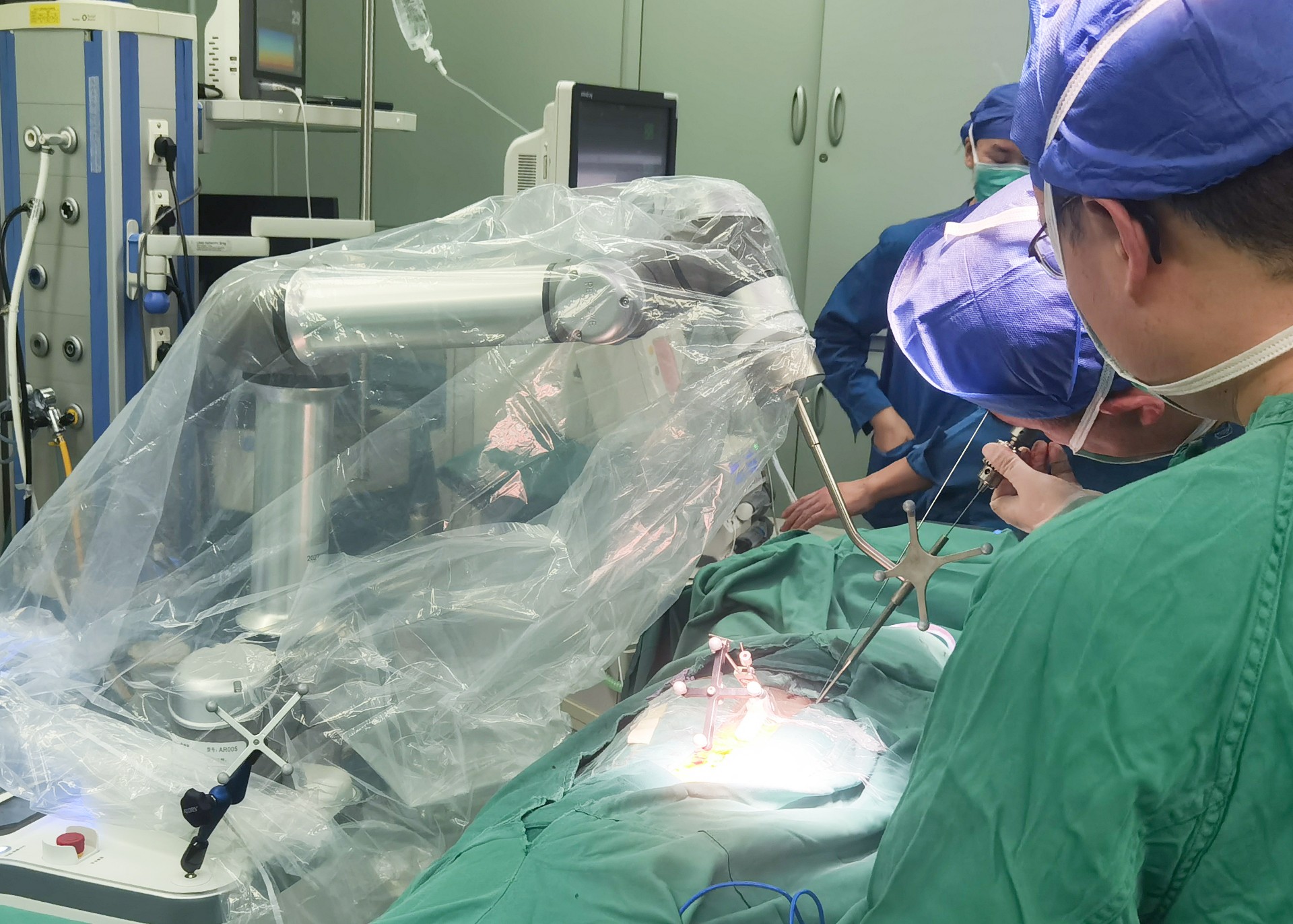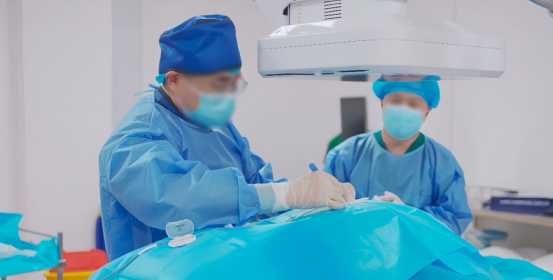News
2022-07-06 14:45:03 Views:1364
PL300B surgery robot has launched! Enables accuracy! Minimally invasive! Low radiation!
In recent years, the incidence of orthopaedic-related diseases has been increasing in line with the ageing of society. How to improve the quality of orthopaedic surgery while maintaining the quantity of surgery has become a key issue for the orthopaedic industry. As a result, orthopaedic surgery robots have been created.
In contrast to traditional orthopaedic surgery, which is susceptible to factors such as patient positioning, accuracy of surgical instrument control, personal experience and fatigue of the surgeon, which affect the success rate and reliability of the surgery, the orthopaedic surgery robot can perform automatically or passively at the operator's command, and the mechanical arm positioning replaces the operator's bare hand positioning, improving stability and accuracy.

Especially for highly sophisticated orthopaedic procedures such as scoliosis, the orthopaedic surgery robot digitally empowers the surgeon's "hands" (robotic arm), "eyes" (navigation) and "brain" (intelligent planning). With the advantages of simple operation and short learning curve, it can effectively solve the clinical pain points of traditional surgery, which relies too much on the operator's experience and cannot achieve standardized and repeatable operation.
After years of independent research and development, Perlove’s orthopaedic surgery robot has built a good medical-industrial cooperation system from clinical needs, overcome difficulties in multi-disciplinary fields, and achieved important breakthroughs in core technologies such as the development of highly dexterous and lightweight robotic arms, intelligent planning and navigation algorithms.
Intelligent assistance and accurate positioning

orthopaedic surgery robot can currently perform cervical, thoracic and lumbar spine surgery on segments of the spine. In conjunction with the mobile 3D C-arm, the robot assists in the positioning of surgical instruments or implants.
During surgery, a 3D image-based planning mode is selected to simulate the nail placement according to the different surgical procedures. The intraoperative planning allows the surgeon to accurately place the implant.
Minimising the complexity of surgery

The multiple screw paths are planned in one go, and the robotic arm is used for intelligent positioning, effectively solving the problem of multiple manual nail insertion and positioning operations, saving planning and positioning time, simplifying the surgical procedure and improving the efficiency of nail placement.
orthopaedic surgery robot-assisted surgery requires only a single nail placement incision on the surface of the lesion during surgery.
Increased efficiency Reduced radiation

To fix fractures accurately and safely, surgeons need to constantly monitor intraoperative fluoroscopy to determine and correct the position and direction of guide pins or screws, which inevitably leads to prolonged exposure of intraoperative health care workers to radiation damage. Based on the orthopaedic surgery robot operating procedure, fluoroscopy is only required to obtain images in 3 sessions: preoperatively, after the positioning guide pin has entered and after the screw has entered, and the surgeon does not need to be exposed to radiation during the image acquisition process, which significantly reduces the total amount of X-ray damage to the doctor and patient compared to the traditional surgery procedure. If you would like to learn more about the Perlove orthopaedic surgery robot, please follow the Perlove Medical website:perlove.net.
Chat with us!
-
Surgical Robots Take the Stage in the “Battle to Protect the Spine”
Read More » -
Application of 3D C-arm Imaging in Radiofrequency Ablation Treatment of Trigeminal Neuralgia
Read More » -
Correcting Limb Length Discrepancy | 3D C-arm Assisted Epiphysiodesis in Pediatric and Adolescent Patients
Read More » -
Perlove Medical Concludes a Successful Presence at RSNA 2025 in Chicago
Read More » -
Multiple C-arm Systems From Perlove Medical Installed at Zhujiang Hospital of Southern Medical University
Read More » -
Perlove Medical 3D C-arm Installed at Ningde City Hospital
Read More »





